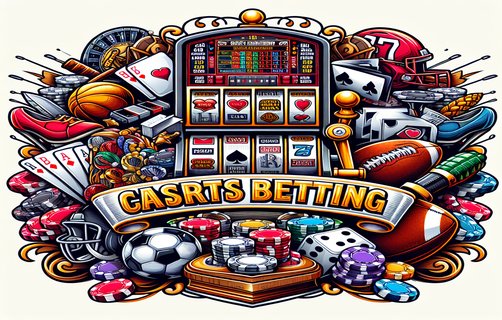The Intricacies of Modern Gambling: A Comprehensive Analysis of Online Sportsbooks and Casino Dynamics
The landscape of gambling has evolved dramatically in recent years, propelled by technological advancements and a shift in consumer behavior. This paper seeks to delve into various components of the gambling industry, including online sportsbooks, iconic games like Mega Fortune, the prevalence of credit card casinos, the phenomenon of high-stakes gambling, compelling slot themes, VIP access levels, and the regulatory measures surrounding gambling advertising.
Online Sportsbooks: The rise of online sportsbooks revolutionized how enthusiasts engage with sports betting. Unlike traditional betting shops, online platforms offer heightened accessibility and transparency, drawing in both novice and seasoned bettors. The data shows that the global online sports betting market reached approximately $76 billion in 2022 and is projected to grow exponentially. This accessibility is largely due to the mobile-first approach of these platforms, providing bettors with real-time statistics and odds, which enhances the betting experience. Furthermore, the integration of live betting has enabled instantaneous wagering, which attracts a younger demographic and boosts overall engagement.

Mega Fortune and Slot Themes: Among the plethora of online gambling options, slot games have become a staple attraction. Mega Fortune, a product of NetEnt, stands out as one of the most popular progressive jackpot slots, known for its life-changing payouts. The themes of these slots significantly influence player engagement and retention. For example, themes revolving around luxury, adventure, and mystery effectively capture the audience's imagination, encouraging prolonged play. An analysis of slot theme popularity shows that adventure themes lead with a 37% attraction rate, whereas luxury/wealth themes like Mega Fortune command about 25%, showcasing the diverse interests of the gaming community.
Credit Card Casinos: The proliferation of online gambling facilitated the growth of credit card casinos. This method of payment has become the most widely adopted, primarily due to its convenience and speed. However, it is essential to address the accompanying issues such as gambling addiction and financial mismanagement, which have risen in tandem with easier access to funds. Regulatory bodies are increasingly scrutinizing these practices, advocating for responsible gambling initiatives. Data reveals that around 50% of online gamblers utilize credit cards, making it imperative for operators to implement stringent credit checks and promote responsible expenditure.
High-Stakes Gambling: High-stakes gambling is another critical area within the modern gambling milieu. It often involves not just larger bets but a unique social dynamic where players enjoy an exclusive atmosphere. High-stakes areas in casinos are designed not just for gaming but also for creating a luxurious experience, attracting wealthy clientele. The allure of high-stakes tables derives from both the potential for significant winnings and the social prestige associated with being a high roller. This segment often features bespoke services, enhancing player loyalty and satisfaction.
VIP Access Levels: The implementation of VIP access levels within casinos has emerged as a strategic approach to enhance player retention and loyalty. These programs vary significantly, often offering exclusive bonuses, personalized services, and dedicated account managers. According to industry reports, VIP players account for an estimated 20% of total players but contribute to approximately 80% of total revenue for online casinos. This stark disparity highlights the importance of cultivating relationships with high-value customers, creating tailored experiences that cater directly to their preferences.
Gambling Advertising Regulations: Finally, the regulatory landscape surrounding gambling advertising is continually evolving to address societal challenges associated with gambling. Regulations vary widely across regions but often entail strict guidelines to protect vulnerable populations, especially minors. A recent survey highlighted that approximately 60% of advertising strategies involve responsible gambling messages, indicating a shift towards more ethical and sustainable practices in marketing.

In summary, the gambling industry reflects a dynamic interplay between innovation, consumer behavior, and regulation. As we navigate this landscape, understanding these components is crucial for stakeholders, allowing them to make informed decisions while also fostering a responsible gambling culture.
